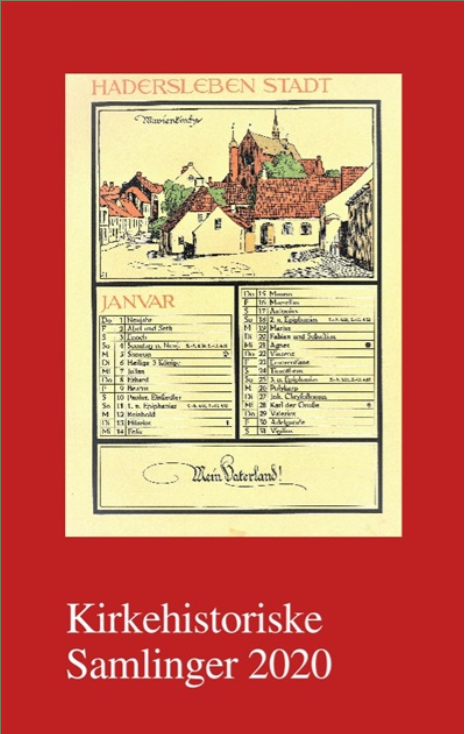Publiceret 25.02.2025
Citation/Eksport
Copyright (c) 2020 Tidsskriftet Kirkehistoriske Samlinger

Dette værk er under følgende licens Creative Commons Navngivelse – Ingen bearbejdelser (by-nd).
Resumé
Hans Fuglsang-Damgaard er kendt for sit virke som biskop over Københavns stift fra 1934 til 1960 og for sin modige indsats over for jøder i Danmark under Anden Verdenskrig. Derimod er hans krigsdeltagelse og ophold i fangelejren Aurillac i Frankrig under Første Verdenskrig fra 1916 til 1919 ikke tidligere belyst. Denne udgivelse fremlægger for første gang bevarede breve fra Fuglsang-Damgaard i Aurillac, og indtil afstemningsresultatet i Nordslesvig den 10. februar 1920 forelå. De første seks breve er skrevet til residerende kapellan i Århus Carl F. Wagner, og de giver foruden et stemningsbillede af sønderjydernes liv i lejren et indtryk af, hvordan breve og bøger, som han sendte til Fuglsang-Damgaard i Aurillac, bidrog til, at han opretholdt modet og håbet. Fuglsang-Damgaard brevvekslede i den sidste tid i lejren også med C.F. Wagners datter, Calina Wagner, og denne brevveksling fortsatte efter hans hjemkomst. I to af disse breve fra 1920 beskriver han oplevelsen af afstemningen i Sønderjylland i zone 1 den 10. februar 1920.
Summary
Captivity and reunification. Letters by Hans Fuglsang-Damgaard 1916-1920.
This article presents hitherto unreleased letters written by Hans Fuglsang-Damgaard (1890-1979) during his captivity from 1917 to 1919 and during the reunion of North Schleswig with Denmark in 1920. In the years to come, he became Bishop of the Diocese of Copenhagen. The letters were subject to censorship. They were stamped by the French authorities, and he does not touch upon political topics in them. They are currently located at Fuglsang-Damgaard’s private archive at The Danish National Archives, Rigsarkivet, and are not easily accessible. Fuglsang-Damgaard was from Southern Jutland, and in 1915, he was drafted for German war service. In 1916, he was taken prisoner at the Battle of the Somme. He was in the prisoner-of-war camp in Aurillac in Southern France for Danes from Southern Jutland during the period between 1916 and late March 1919, at which point he returned to Copenhagen. In Aurillac he corresponded with reverend C.F. Wagner from Aarhus. In several of the letters, he writes that the letters from Wagner and the books that he received from him helped him to keep up his spirit and hope. He reports about Christmas Eve in the camp in 1917 and about the visit of Professor Paul Verrier. He writes that he held church services in the camp, and regarding the everyday
life in the camp, he was a spiritual adviser for his fellow prisoners. He mentions that he studied Theology in the camp and that he wished to study Theology at the University of Copenhagen when the war would have ended. In the letters, he reminisced his home, and he mentions the church life. The letters are characterized by a yearning for peace and a normal everyday life.
In the last part of his time in the camp, he exchanged letters with C.F. Wagner’s daughter, Calina Wagner, and they continued to do so
after his homecoming. He witnessed the vote in Southern Jutland in zone 1 the 10th of February in 1920, which he refers to in two letters from 1920 to Calina Fuglsang-Damgaard.

